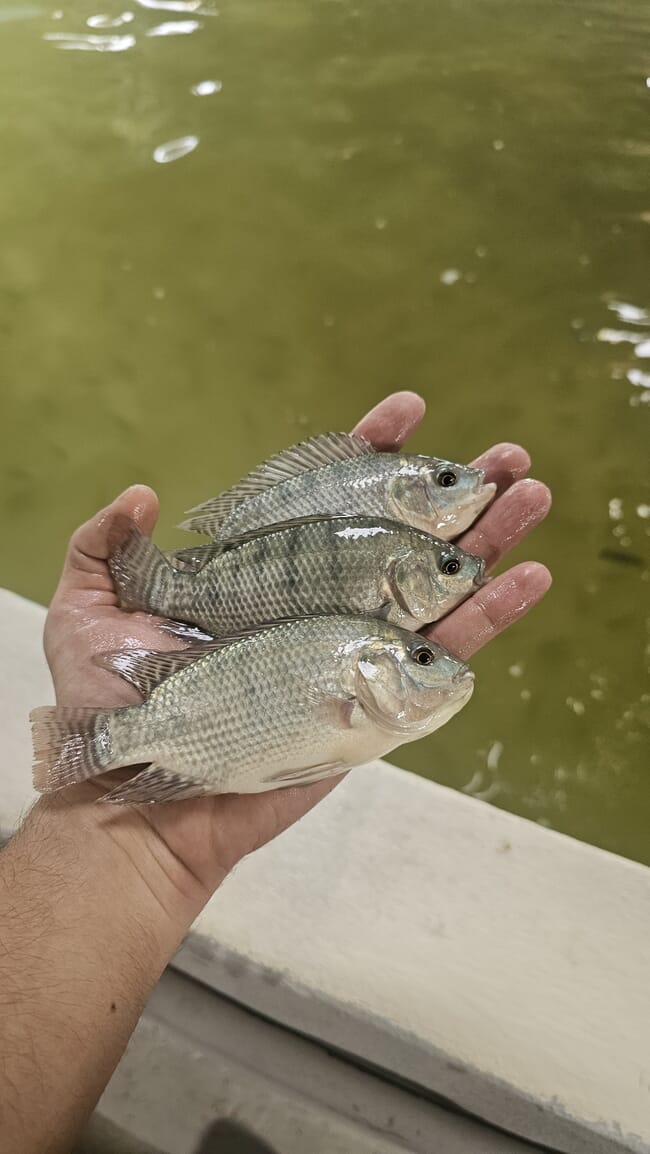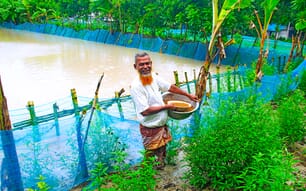
Can you tell me a bit about your background?
I hold a BSc in aquaculture from Alexandria University, where I’m currently doing my master's – specialising in fish production and welfare. I contributed to a scientific study on the breeding of red tilapia, a hybrid of Nile tilapia (Oreochromis niloticus) and Mozambique tilapia (Oreochromis mossambicus), in saline waters. The research focused on improving fry quality and survival rates and demonstrated the effectiveness of using nanocurcumin as a fertility enhancer, offering significant advances in breeding practices under varying salinity conditions.
What sort of farms have you worked on?
During my university studies, I gained experience working on open system farms in Kafr El-Sheikh and Beheira, where I learned the techniques of breeding and hatching tilapia in earthen ponds. After graduating, I spent a year in Kuwait establishing a recirculating aquaculture system (RAS), utilising galvanized iron tanks with a production capacity of 50 tonnes per cycle. Currently, I serve as the technical manager for the tilapia farm at Mahar Trading Company, in Saudi Arabia.
What sort of production system do you currently operate at Mahar farm?
The tilapia RAS farm occupies an area of 300 m2 and consists of 14 tanks, each varying in size from 9 to 15 metres. The total water volume is 2000 m3 with a production density of 30 kg per m3 and potential for further increases.
Initially, the farm's production capacity is set at 40 tonnes per 200 day cycle, with plans to expand this to 500 tonnes per cycle in advanced operational phases.
The target marketing weight for tilapia ranges between 300 to 600 grams to meet market demands.
Can you describe your current role and what a typical day at work involves for you?
My role on the farm involves supervising and ensuring that operations run efficiently and with set standards. This includes maintaining detailed records of fry sources, monitoring mortality rates, and measuring average fish sizes. I also oversee daily water quality checks, monitoring key parameters such as ammonia, temperature and pH levels. In addition, I check the bacterial biomass in the filters responsible for ammonia removal, taking corrective actions as needed, whether adjusting water levels or stimulating bacterial activity.
How does RAS technology contribute to sustainability and efficiency?
RAS facilities conserve water and optimise its usage. These systems operate with the lowest rates of water exchange, thereby minimising waste. Additionally, we can reuse wastewater for a hydroponic component, as on our farm where we cultivate date palms.

What are the major challenges faced by RAS operators?
Sudden issues in the filter system, particularly the biological filter responsible for purifying water from ammonia - the silent killer of fish - are among the biggest challenges. Even a minor problem can lead to significant consequences, especially with high stocking densities, making constant monitoring of all system components essential. This is where technology plays a crucial role in ensuring the system runs efficiently. Among the most vital components are the sensors that detect malfunctions or fluctuations in water parameters, providing early warnings and helping prevent major issues.
What are your long-term ambitions?
My ambition is to establish my own world-class tilapia RAS facility in Egypt, which is recognised as a model of excellence in sustainable aquaculture and can also be used to train students and recent graduates.
If you could solve one issue in the aquaculture industry, what would it be?
Addressing water quality issues on a permanent basis remains a crucial objective. Additionally, expanding research on the use of saltwater by hybridising freshwater species to tolerate higher salinity levels is essential. This effort is driven by the need to make full use of abundant saltwater resources. It is especially relevant for species that appeal to consumers, such as red tilapia, which is a promising fish in East Asian markets.
What production systems do you think have the most scope for growing Middle Eastern aquaculture in the coming years?
Closed aquaculture systems that maximise water volume usage, reduce water consumption and improve waste management, such as recirculating aquaculture systems (RAS) and biofloc technology. Additionally, many countries are increasingly focusing on expanding sea cage farming.








